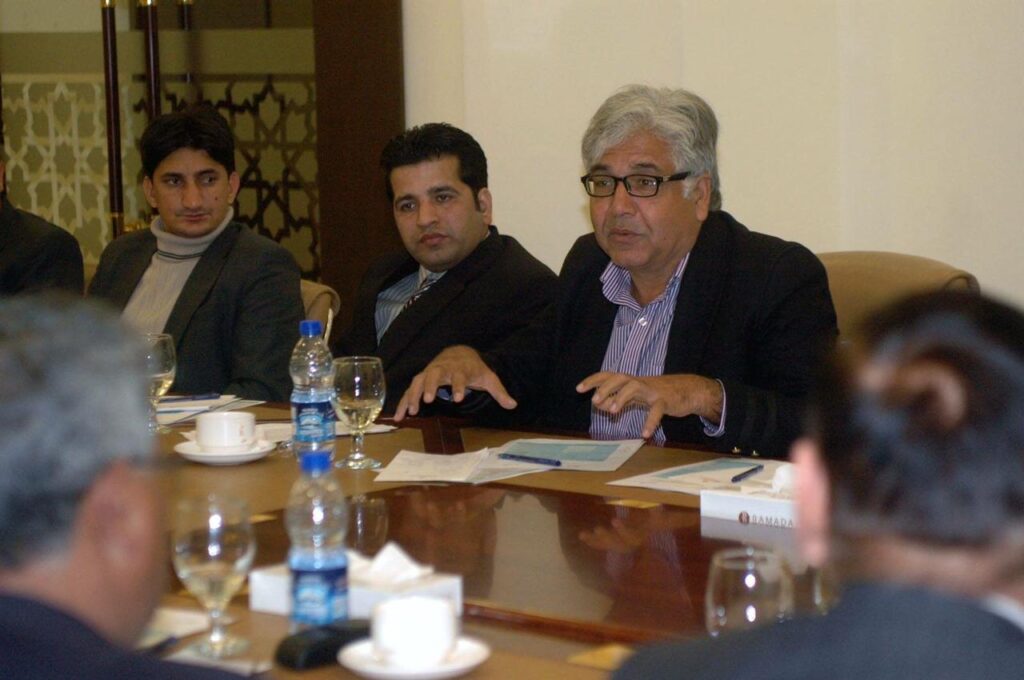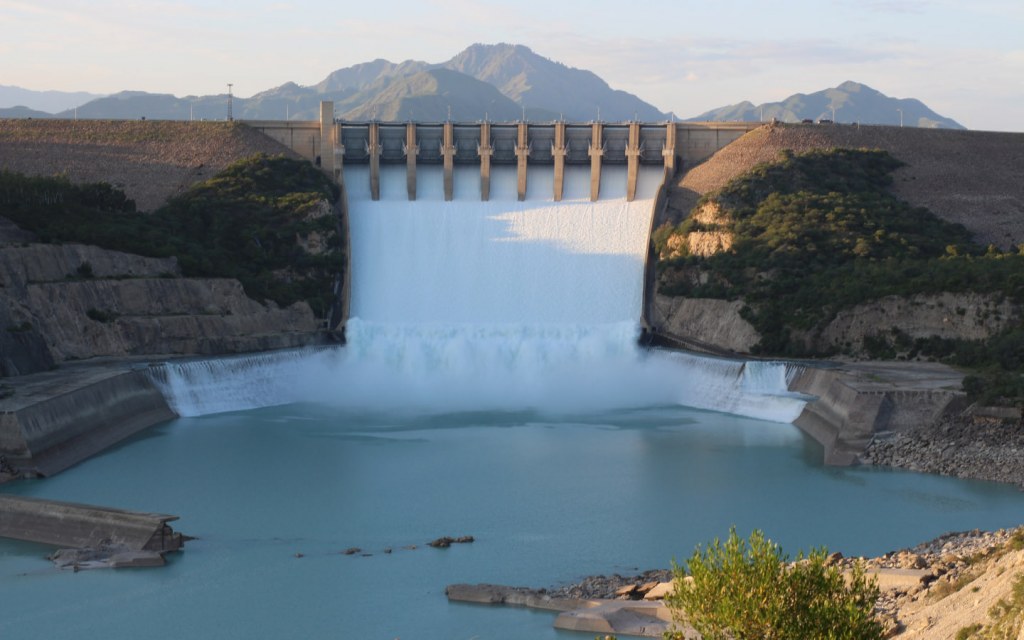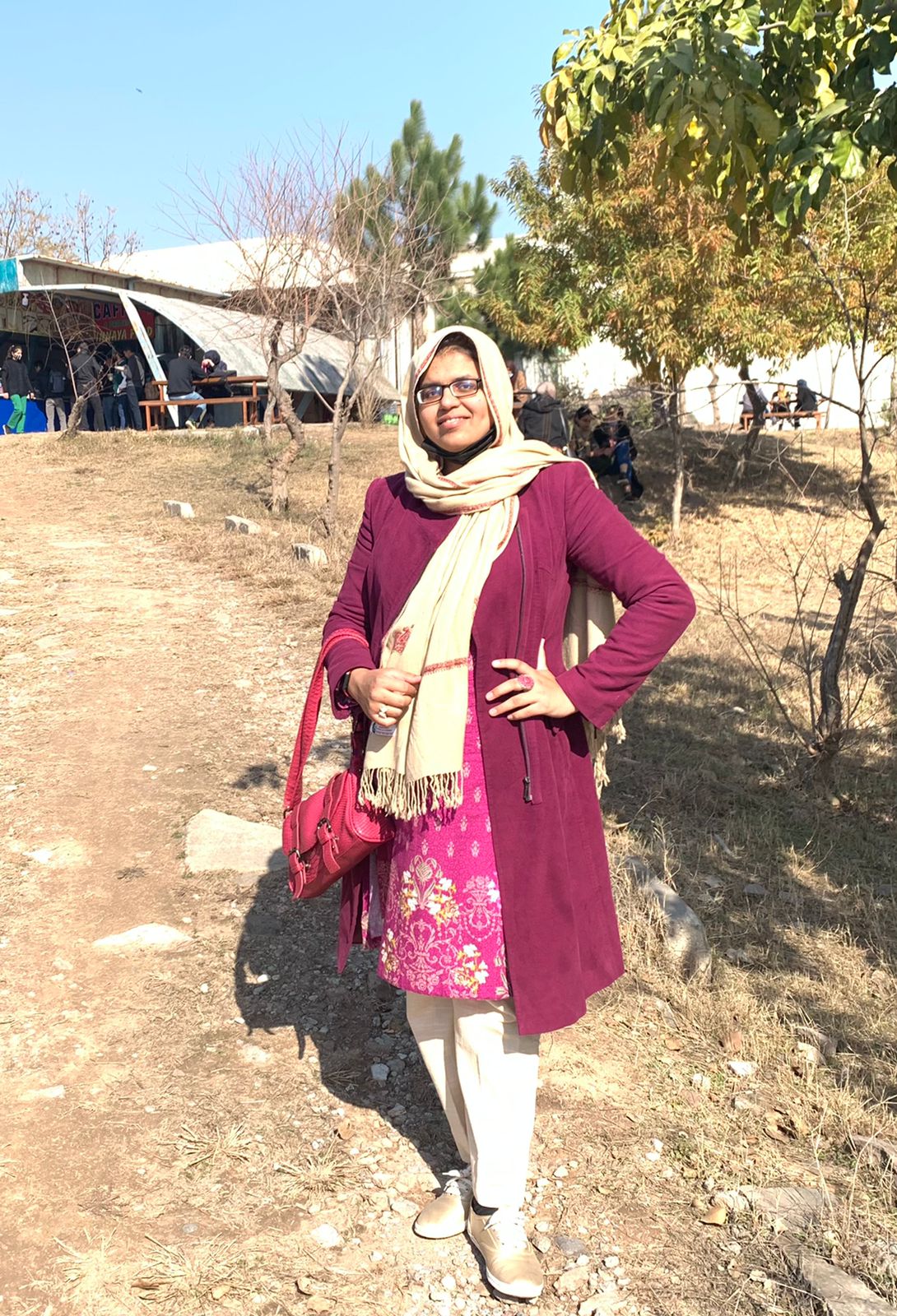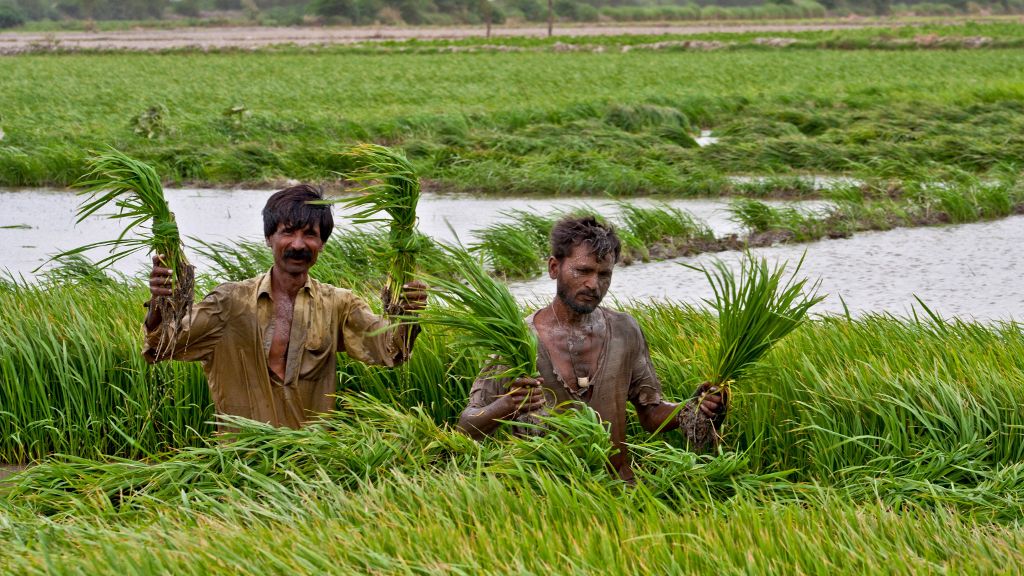Agriculture is an important sector of Pakistan’s economy. This sector directly supports the country’s population and accounts for 21 percent of gross domestic product (GDP). Roughly 95 percent of Pakistan’s water is used for agriculture, with 60 percent of its population directly connected to agriculture and livestock and 80 percent of exports based on these sectors. Recently, the Pakistan Council of Research in Water Resources issued a serious warning regarding continuous careless water mismanagement and that the country may totally run out of water by 2025.
Dr. Pervez Aamir is a senior environmental economist at the Asianic Agro division environmental. He completed his early education at Lassale High School Faisalabad in 1972. Later he graduated in Plant Breeding and Plant Genetics from the University of Agriculture Faisalabad, followed by Ph.D. in agricultural economics from Michigan State University in 1984. He currently works in advanced environmental economics courses at Harvard University and is the former research associate at Winrock International.
Below are excerpts of his recent conversation with our team member Aniqa Mazhar.
Aniqa: Please enlighten us with an introduction of yourself.
Dr. Pervaiz: I am an economist and the director of the Pakistan Water Partnership and a former member of the Prime Minister’s Task Force for Climate Change.
Aniqa: How do environmental economics benefit society and agriculture?
Dr. Pervaiz: Environmental issues like climate change, pollution, fog, and particularly pesticides directly affect agriculture. If you successfully control pollution in urban areas, its impact can be directly observed on our wheat crop.
Similarly, if we properly control environmental regulations and patents and medicines in livestock and crop agriculture, it will also show direct benefits. Likewise, if we plant trees in the whole country instead of just specific tsunami-affected areas, rainfall patterns can improve significantly as rainfall increases. This is very beneficial for a dry country like Pakistan.
Poor countries of the world first focus on the ‘stomach,’ social services, health, education allocation, etc. Environment comes later.
Aniqa: What do we basically study in environmental economics? Environmental science is part of Biology, so how is it linked to Economics?
Dr. Perviaz: The main thrust of economics is allocating resources like land, labor, capital, etc., for the maximum benefit of society. Different issues in biology and environmental studies like residues, the ionosphere can be dealt with keeping in mind the economic perspective, which is called opportunity cost.
For example, if we start a cement factory-like in Kallar Kahaar, it may be that it proves to be a source of prosperity for its stakeholder, but the life of that area, either trees or wildlife, is affected. Water quality is concerned.
This is where the two fields’ symbiosis occurs; looking at biology through an economic lens and keeping in mind the biological limitations when studying economics. Covid-19 is an excellent example. The virus has led to the complete destruction of the country’s economy, closed all businesses during the lockdown, and still negatively impacted it.
Aniqa: Nature is indeed the GDP of the lows; their income largely depends on it. Why don’t we recognize this in Pakistan and invest in preserving nature?
Dr. Pervaiz: We do recognize this, but our budget for the Ministry of Environment is the lowest. The Environment becomes a priority with the progressive advancement of a country and how rich it is. Most trees planted in the world are in the US or Canada, or Europe. India also has about 30 percent cover by forests.

Poor countries of the world first focus on the ‘stomach,’ social services, health, education allocation, etc. Environment comes later. In Pakistan, less than one percent of the total budget is allocated to the Ministry of Environment. Now, it has been made to the Ministry of Climate Change. They have combined the fields of Environment and Climate Change. The 17 SDGs include separate goals for trees, birds, oceans, land, economics, and education. About three to four 3 goals linked to the Environment are lumped together. Separate allocation is not available.
The poor farmers have animals who graze land or trees or any biomass. The main thrust of our economy is to increase the GDP, whether it is sustainable or not. Sustainability is not a concern.
Aniqa: Climate change is still a rarely discussed topic in Pakistan. Why is it so?
Dr. Perviaz: I don’t believe that’s true. We have worked a lot on climate change in Pakistan in the last 18 to 20 years or so. I have been very closely associated with it. Pakistan ranks 5th in the German Watch right now. The German Watch is a world risk index, but two or more countries present have no reality.
Aniqa: What is the German Watch?
Dr. Pervaiz: It is a Vulnerability Index for 122 countries of the world. It ranks countries according to their climatic risks. In that ranking, Pakistan’s name comes in the top ten. It has always been so, but this time it is on the 5th number. Countries like Fiji, Philippines are in the top 4, and they are pretty small countries with a population even smaller than Karachi. So, in my view, the most vulnerable to Climate change would have to be Pakistan.
We are part of the Paris Agreement as well and have provided several reportings to them. Our emissions are pretty less globally; we stand at number 135 in emissions in the world. But where the effects of Climate change are concerned, whether they may be a shortage of water, biodiversity, glacier melting, marine life, or droughts, they are all severe. In Pakistan, climate change has multiple threats, unlike in Europe, where there’s just a change in temperature and weather.
Therefore, we take this issue of climate change extremely seriously, but we’ve lumped it with Environment and cannot distinguish the two as separate fields, although I believe the distinction is quite clear.
Aniqa: The Environment includes plants, animals, etc. Climate affects all of these, right?
Dr. Pervaiz: Yes, all of these are affected by climate changes.

Aniqa: Sir, why is it then that we are not able to differentiate between these two? What is lacking in our research or the methodology of the people working on this?
Dr. Pervaiz: You see, research is already mere. Now, a couple of universities have come to start work on this. ITCC reports, which are international, are only focused upon here.
We have opened up many departments on Environment in many universities, but departments for Climate Change have been opened only recently at LUMS and one or two other places. These are units rather than full-fledged departments. The hardcore work of Climatology has two phases: adaptation and mitigation.
We should introduce this field of climate change from an early level at school to a higher Ph.D. level. In Islamabad, there is a center at the Ministry of Climate Change, previously known as the Ministry of Environment, called CGSIC, a global climate change center. COMSATs University is also doing some work on Climate change, as well as the University of Faisalabad.
Aniqa: So, all these departments are introductory?
Dr.Pervaiz: Yes, a lot of investment is required. The field of Environment is relatively better established. It is the people of the Environment who exhibit leadership in climate change.
Aniqa: Are these two different fields, or can we say that climate change is a subfield of environmental science?
Dr. Pervaiz: Weather is the day-to-day characterization of the atmospheric conditions, whereas climate describes long-term atmospheric conditions. They are distinct subjects but entirely overlapping, for example, how carbon dioxide emissions affect the Environment.
Aniqa: The Indian Government has canceled hydroelectric projects to conserve rainforests. However, in Pakistan, our electric consumption depends on hydroelectric sources despite massive rain patterns. What do you think?
Dr. Pervaiz: India is working on 5000 dams. We only have 3 to 4 dams. Water security is the most important in the world. Nuclear power and other things do not matter as much. Countries that are water-secure survive while those that are not.
We make dams for water storage at a point to regulate and make it reach a place where a shortage is faced. An extra benefit of a dam is hydropower. You can attach the dam to a turbine to create electricity.
Pakistan is still deficient in electricity. Our struggle is to ban activities that lead to carbon dioxide emissions like burning oil for generators, burning coal, etc. hydropower is the best strategy for Pakistan. To be exact, hydropower, wind energy, solar energy.
India is going towards solar rapidly as well as currently making the most significant number of dams. Our main threat is India, and we need more focus to cope.
Aniqa: How are economic activities related to water resources and the Environment?
Dr. Pervaiz: Pakistan’s economy is basically agriculture-based. Most of our economic activities revolve around our crops. If we talk about sugarcane, it is used in sugar mills. Cotton produced is used in the textile industry. Agriculture is a way of living for us. Our industries would halt without it. We want to provide a facilitative environment for agriculture. For that, safe drinking water is the first most essential thing required. No country can advance without it. Around 40 percent of diseases in Pakistan are due to dirty water, like diarrhea.
Next, if the air in your Environment is not clean due to industries or atomic waste, children’s lungs are affected from birth. Their productive life is less than 50 years. It is crucial to tailor the Environment so that our life expectancy increases to 80 to 90 years like in America.
The quality of life should also improve. If people go to the park, they should feel at peace and harmony with birds and nature. In Europe, for example, societies with suitable physical and biological Environments have higher productivity. Factories with trees and clean water in their vicinity will have more productive labor.
Look at Kalma Chowk in Lahore, people are dying from coughing and sputtering. How productive do you expect them to be with such a condition?
Aniqa: Water is an essential part of economic development. Do you think Pakistan works well in this regard?
Dr. Pervaiz: Many people say that Pakistan had 5000 cm3 of water when made in 1947. Now it has even less than a 1000cm3 left. The main reason is not that the amount of water has lessened. The population growth of Pakistan is relatively high. Availability per capita is quite less due to mismanagement of water resources. We plant crops like sugarcane and cotton, etc., which are very water-intensive.
People living near the rivers face no water shortage, but Southern Punjab faces a severe drought.

Aniqa: So, areas with less water have slower economic development?
Dr. Pervaiz: Yes, exactly. Where does terrorism occur? In extreme and dry desert areas and peripheries of Balochistan, KPK, Sindh, and Punjab.
Aniqa: Which economic, political, and cultural factors significantly impact local agricultural practices in Pakistan?
Dr. Pervaiz: The most significant is land-reforms. The main chunk of the population’s land is in landlords’ hands, who rarely visit those lands. In India or other countries, 65 acres or 1 acre of land is the maximum an owner can have at a time.
Pakistan has been affected by early politics; it was made by the inherited properties of Nawabs and landlords. The English adopted the method of grasping power by land and water allocation, control, and distribution in the political economy. So that’s why Pakistan’s history includes only a few families with the land.
We need productive gain per acre of land, which can be achieved when society prioritizes agriculture as a focal thrust. When wheat, fruits, and vegetables start to go down, all the public starts screaming. When they are available, nobody wants to worry about agriculture. Other sources like McDonald’s, Defense in Lahore and societies, are given priority and allocation.
Aniqa: What is available is always taken for granted?
Dr. Pervaiz: Exactly. You asked at the beginning about poverty. We can reduce it when water is appropriately managed. 20 percent of our GDP that is 50 billion dollars, is from agriculture. We can quickly increase it to 350 billion dollars! If we surmount political barriers and develop our deserts like China, poverty can be erased, and harmony can prevail.
The poor can eat, distribution to other countries can also be possible. This is called the ‘multiplier factor’ in economics. When money is transferred to England by Nawaz Sharif, the economy faces a net loss. Money made in Pakistan should be invested in agriculture and circulated here to increase Pakistan’s productivity and reduce poverty.
Aniqa: My last question is that economic and ecological systems are interlinked at the local and global levels. What challenges do we face due to massive environmental changes in different parts of Pakistan? For example, the sea intrusion in the Indus Delta, glacier melting, droughts in Balochistan?
Dr. Pervaiz: We either deliberately or unintentionally disturb the ecological system. People say sea intrusion is because of dam-building, but both these are not related. Dam water is used in industry, agriculture, and power generation. Studies show it is a natural phenomenon and is not affected by dams built on top regarding sea intrusion.
Cutting of mangroves and deforestation are at peak in the world. Humankind disturbed the ecological balance itself. Pakistan has 1046 km of coastal areas; we export crawlers and planted them there. That totally destroys the natural flora and fauna over there. Other plants from France and China are also totally ruining the ecological balance there.
Likewise, Pakistan is one of the lowest countries in the world in tree plantation. Not even 4.2 percent of our land is covered with forests. Good countries have 25 to 30 percent cover. Canada has 60 percent cover. Our cover is so less that it leads to soil erosion, and ecological imbalance is inevitable. Severe erosion leads to issues like landslides which also affect the ecology.
People are making a racket about the Indus Dolphin’s extinction, but they don’t care about its habitat. Species depletion is occurring rapidly. Natural parks are rare, while their protection is almost zero.
In olden times, villages had ponds with birds and animals. Now, societies are being made in all these areas and creating biological imbalance.
Aniqa: This imbalance is because industrialization is increasing, right?
Dr. Pervaiz: Yes, cities and industrial zones are increasing at their own pace, but small factories everywhere outside a zone are very problematic—for example, the brick kilns industry.
Ecological balance is at the lowest ladder of economic thinkers. Their vision is blocked; they don’t want to think about the outcome. They just think about the money they’ll get, the money that’ll go in the FBR. Money is all that is being focused on.
Aniqa: Thank you very much, Sir, for your precious time and for sharing your knowledge!
Dr. Pervaiz: My pleasure! I hope you got the answers you were looking for and I wish you the best of luck with your magazine!
Also Read: TURMOIL UNDER THE WATERS

Aniqa Mazhar is a graduate of QAU in Biochemistry. She has taught sciences to O levels and is currently planning for her MS in Food Technology. Aniqa’s hobbies are reading, watching movies, writing, calligraphy, long walks, and nature photography.

